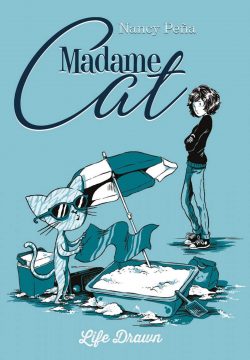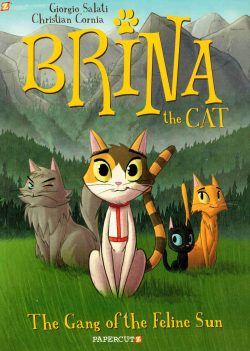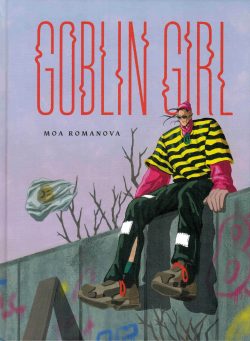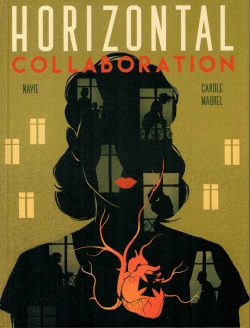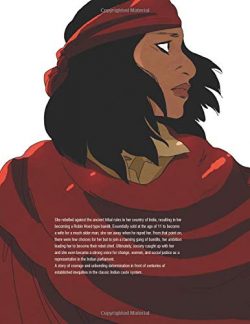

By Claire Fauvel, translated by Montana Kane (DC Comics)
ISBN: 978-1-68112-251-9 (HB)
Born in 1988, award-winning graphic novelist Claire Fauvel (À la recherche d’Alvaro Dolor; Sur les pas de Teresa, la religieuse de Calcutta [w/Marie-Noëlle Pichard]; Une Saison en Égypte; Catherine’s War [w/Julia Billet]) studied illustration at Paris’ l’école Estienne and animation at l’école des Gobelins before beginning an illustrious career in bande dessinée. She’s particularly adroit and adept with female historical figures and her latest tome gives her plenty to work with…
Phoolan Devi: Rebel Queen is that rare event, a history that has all the energy and impetus of a great action adventure and pioneering, political tract. Despite being a factual graphic biography, this is the stuff of legend and grand drama, detailing the astounding, appalling, tragic and triumphant life of a woman who bucked India’s ancient, all-pervasive caste system. Victim from birth of poverty and inequality, she sought change through bloody deeds and ultimately political action in a country where prejudice is institutionalised: expressed via cultural violence, and which fostered for millennia a tyrannical social system of inherent, inbuilt corruption where gods and birth status forever dictate one’s position in life…
Phoolan suffered a double blow at birth: born both poor and female. Never educated, she remained illiterate all her life. A life of being shunned and grinding poverty was exacerbated when she was married off at age 11, starting a harrowing pattern of slavery and sexual abuse lasting until she was rescued by a troop of the legendary bandits infesting Uttar Pradesh at the time. They were actually more decent – and heroic – than most respectable citizens (men), civil authorities and police officers of the region. Becoming lover to one of the gang, she suffered even greater abuse when he was murdered by a rival from a different caste.
Surviving these assaults, Phoolan organised an infamous vengeance massacre at the village of Behmai. That slaughter was picked up by the press, who recast her as a rebel queen and her lover a martyr. The public began using the honorific “Devi†for her and, after a mythic career, she surrendered to authorities in 1983. Over eleven years of imprisonment, 48 capital charges including murder, plunder, arson and kidnapping were incrementally dropped before a trial that never came. In 1994, the state government led by Mulayam Singh Yadav of the Samajwadi Party withdrew all charges and she walked free. Joining the party, she was elected to national office twice, becoming a strong advocate for radical change, in the caste system and the patriarchal treatment of women. Regarded as the “voice of the oppressedâ€, on 26th July 2001 her past caught up with her when she was assassinated by relatives of the bandits killed at Behmai.
Fauvel took her inspiration from acclaimed 1996 autobiography Moi, Phoolan Devi, reine des bandits by Phoolan Devi & Marie-Thérèse Cuny, and although not all of those events are included in this stunning and uncompromising account, the supremely enticing and engaging art manages to mix in a few moments of hopeful aspiration, happy romance and family unity to offset the revolting iniquities Phoolan and other women had to survive on a daily basis.
Nevertheless, this brilliant tale is grim and unflinching in the portrayal of the constant assaults and abuses she endured, so you’d better gird yourself for plenty of righteous indignation and outright anger at the catalogue of venality and casual intolerance civilised folk still seem capable of…
Potent, unmissable, and primed to continue the fight, this is a book you must read.
© 2018 Casterman. © 2020 NBM for the English translation.
Phoolan Devi: Rebel Queen will be published on March 19th 2020 and is available for pre-order. NBM books are also available in digital formats. For more information and other great reads go to NBM Publishing at nbmpub.com




